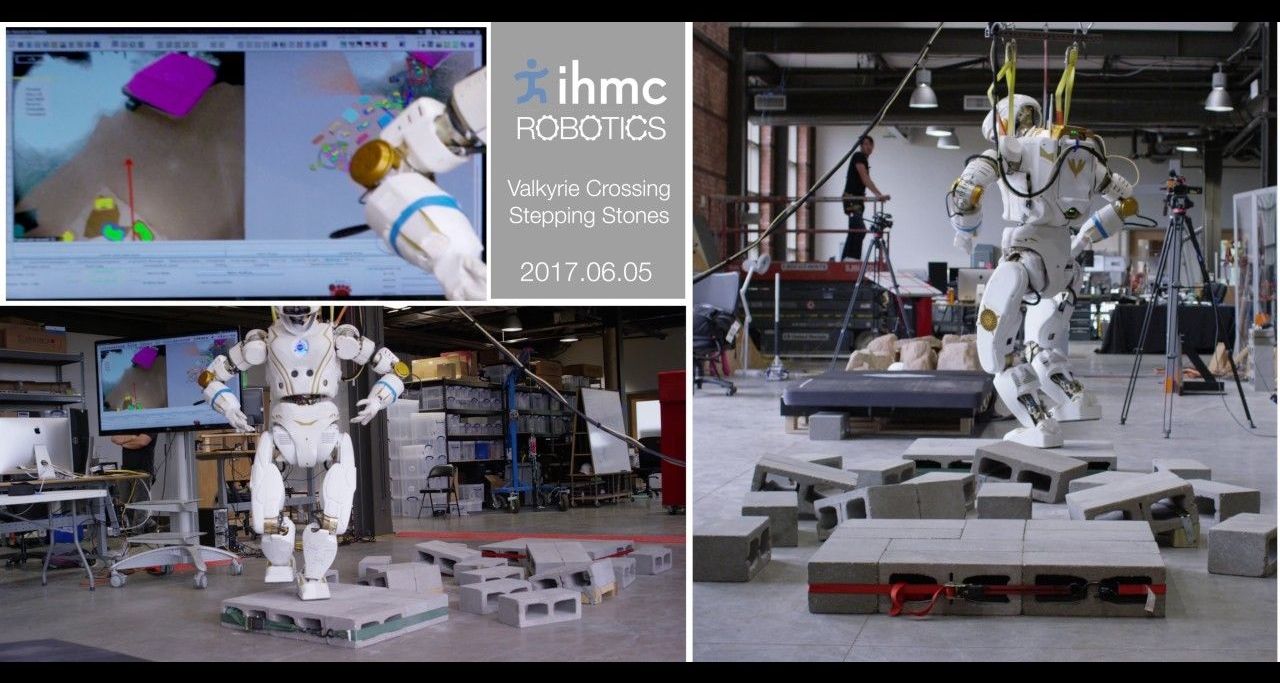SeaWorld VR Roller Coaster
Posted in virtual reality
(Phys.org)—Researchers have built the first robot made of soft, deployable materials that is capable of moving itself without the use of motors or any additional mechanical components. The robot “walks” when an electric current is applied to shape-memory alloy wires embedded in its frame: the current heats the wires, causing the robot’s flexible segments to contract and bend. Sequentially controlling the current to various segments in different ways results in different walking gaits.
The researchers expect that the robot’s ability to be easily deployed, along with its low mass, low cost, load-bearing ability, compact size, and ability to be reconfigured into different forms may make it useful for applications such as space missions, seabed exploration, and household objects.
The scientists, Wei Wang et al., at Seoul National University and Sungkyunkwan University, have published a paper on the new robot and other types of deployable structures that can be built using the same method in a recent issue of Materials Horizons.
Elon Musk’s concept of solving traffic congestion by digging networks of tunnels may have a fan in Los Angeles Mayor Eric Garcetti.
Speaking about the city’s transit issues Sunday morning on ABC 7‘s “Eyewitness Newsmakers,” Garcetti mentioned the possibility of tunneling: “Like many other cities have, I’d love to see maybe even with the new tunneling technology that people like Elon Musk is looking at, whether we could have a quick and direct route from LAX to Union Station.”
There could be an #express train @unionstationla to @flyLAXairport –Here’s @MayorOfLA @ericgarcetti on #Newsmakers. #WATCH 11AM Sun @ABC7 pic.twitter.com/zJAFTge2VO — Adrienne Alpert (@abc7adrienne) June 17, 2017
Derelict satellites could in future be grappled and removed from key orbits around Earth with a space tug using magnetic forces.
This same magnetic attraction or repulsion is also being considered as a safe method for multiple satellites to maintain close formations in space.
Such satellite swarms are being considered for future astronomy or Earth-observing missions – if their relative positions can stay stable they could act as a single giant telescope.
The term “moonshot” is sometimes invoked to denote a project so outrageously ambitious that it can only be described by comparing it to the Apollo 11 mission to land the first human on the Moon. The Breakthrough Starshot Initiative transcends the moonshot descriptor because its purpose goes far beyond the Moon. The aptly-named project seeks to travel to the nearest stars.
The brainchild of Russian-born tech entrepreneur billionaire Yuri Milner, Breakthrough Starshot was announced in April 2016 at a press conference joined by renowned physicists including Stephen Hawking and Freeman Dyson. While still early, the current vision is that thousands of wafer-sized chips attached to large, silver lightsails will be placed into Earth orbit and accelerated by the pressure of an intense Earth-based laser hitting the lightsail.
Video Friday is your weekly selection of awesome robotics videos, collected by your Automaton bloggers. We’ll also be posting a weekly calendar of upcoming robotics events for the next two months; here’s what we have so far (send us your events!):









